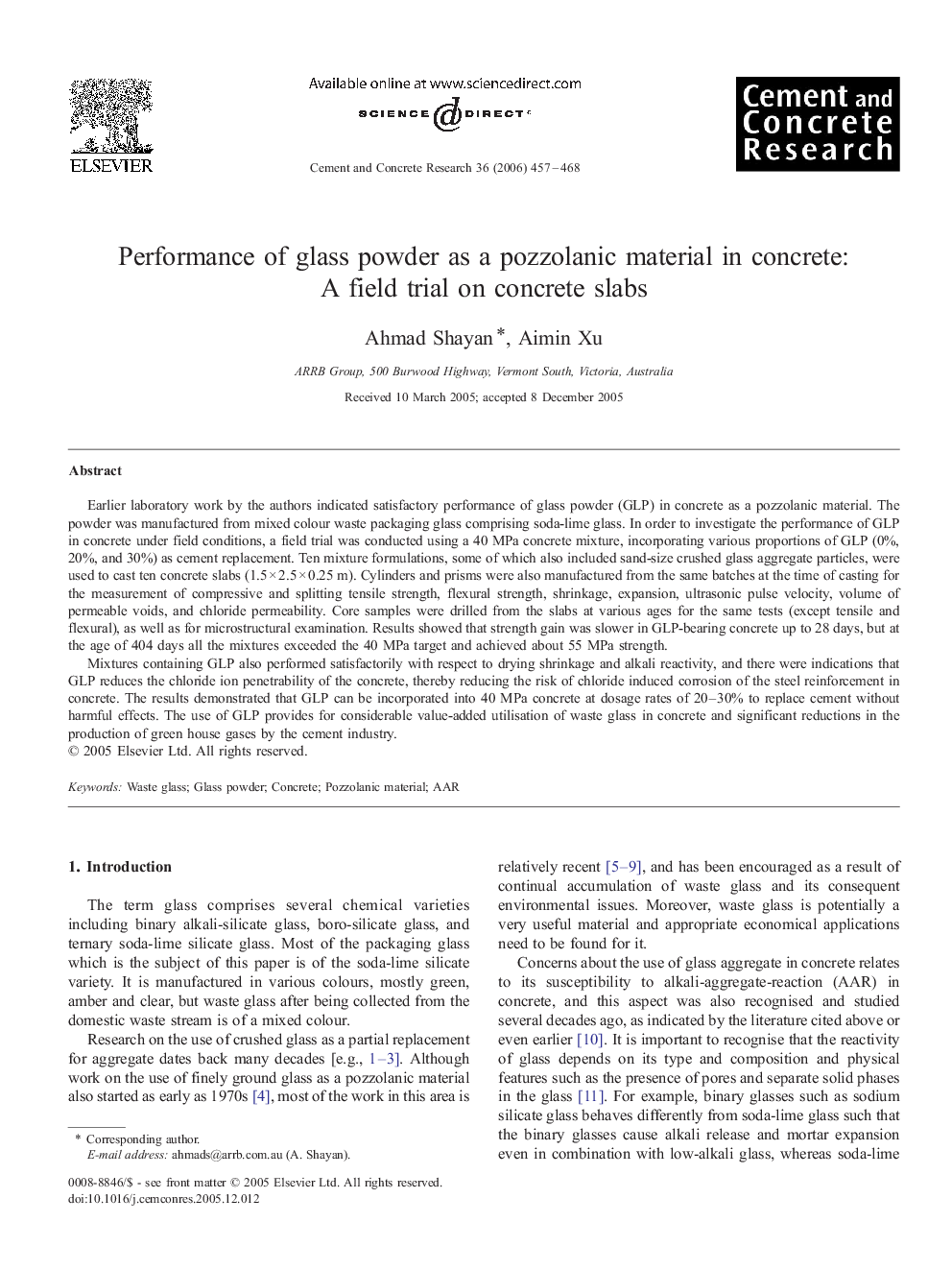| Article ID | Journal | Published Year | Pages | File Type |
|---|---|---|---|---|
| 1457918 | Cement and Concrete Research | 2006 | 12 Pages |
Earlier laboratory work by the authors indicated satisfactory performance of glass powder (GLP) in concrete as a pozzolanic material. The powder was manufactured from mixed colour waste packaging glass comprising soda-lime glass. In order to investigate the performance of GLP in concrete under field conditions, a field trial was conducted using a 40 MPa concrete mixture, incorporating various proportions of GLP (0%, 20%, and 30%) as cement replacement. Ten mixture formulations, some of which also included sand-size crushed glass aggregate particles, were used to cast ten concrete slabs (1.5 × 2.5 × 0.25 m). Cylinders and prisms were also manufactured from the same batches at the time of casting for the measurement of compressive and splitting tensile strength, flexural strength, shrinkage, expansion, ultrasonic pulse velocity, volume of permeable voids, and chloride permeability. Core samples were drilled from the slabs at various ages for the same tests (except tensile and flexural), as well as for microstructural examination. Results showed that strength gain was slower in GLP-bearing concrete up to 28 days, but at the age of 404 days all the mixtures exceeded the 40 MPa target and achieved about 55 MPa strength.Mixtures containing GLP also performed satisfactorily with respect to drying shrinkage and alkali reactivity, and there were indications that GLP reduces the chloride ion penetrability of the concrete, thereby reducing the risk of chloride induced corrosion of the steel reinforcement in concrete. The results demonstrated that GLP can be incorporated into 40 MPa concrete at dosage rates of 20–30% to replace cement without harmful effects. The use of GLP provides for considerable value-added utilisation of waste glass in concrete and significant reductions in the production of green house gases by the cement industry.
